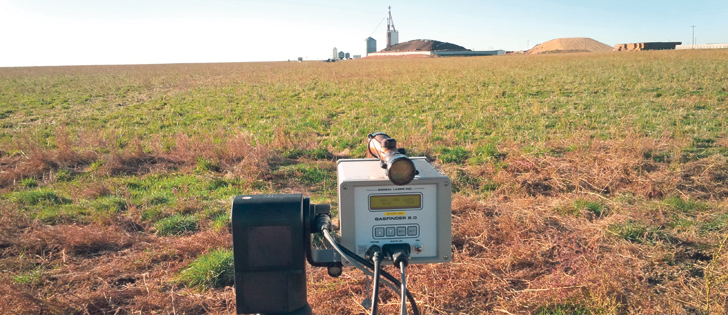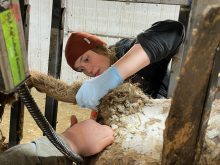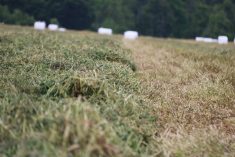Cattle feedlots emit smells.
Some say it’s the smell of money, which is true in times of good cattle markets and is always true because of gases produced by animals and manure.
About 50 to 60 percent of feed nitrogen is lost as ammonia in feedlots, and that loss lowers the nitrogen fertilizer potential of manure.
Reducing that loss could be a major savings in terms of cattle productivity and manure value.
Measuring the amount of emissions has been a challenge until recently, when research undertaken by Agriculture Canada scientists led to accurate ways to detect and measure them.
Read Also

Feds propose overhaul of chronic wasting disease control program
Chronic Wasting disease control program getting updated by Canadian Food Inspection Agency with feedback encouraged from producers.
Sean McGinn, a research scientist specializing in agricultural meteorology, used measuring technology adapted from the oil and gas industry.
It involves the use of lasers that move over a feedlot and calculate concentration of emissions regardless of wind direction.
“We have been developing a protocol that uses field collected data on the mixing capacity of air flow over the feedlot and measured gas concentration upwind and downwind of a feedlot,” said McGinn by email from Australia, where he is conducting related research this month.
“This information is used by a dispersion model to calculate the feedlot emission. This approach has been recognized internationally.”
McGinn and colleague Tom Flesch of the University of Alberta did a two-year study on feedlot emissions using funding from the Alberta Livestock and Meat Agency.
In a news release, McGinn described the project.
“We know beef feedlots are hot spots of ammonia emissions on the landscape, but we didn’t know as much about the dynamics of ammonia emissions from feedlots,” he said.
“For example, we didn’t have real numbers from actual feedlots on how much is emitted, how much is deposited on nearby soil and how much re-emission occurs when that happens.”
McGinn said research using new measurement methods has identified ammonia emissions of 85 to 140 grams per head per day in feedlots. Lower crude protein in cattle diets results in lower nitrogen in the manure and thus less nitrogen lost as ammonia.
He was surprised to find that 50 to 60 percent of fed nitrogen in feedlots is lost as ammonia.
About 14 percent of that ammonia, emitted as gas, is deposited downwind of a feedlot, although the amount varies by surface cover and distance from the site.
“In the local vicinity of a feedlot, both ammonia deposition (14 percent of the emitted ammonia) and reemission occurred,” said McGinn. “That 14 percent is a large amount considering a typical feedlot emits one to two tonnes of ammonia per day.”
Much of the previous research on cattle gas emissions has been done using animals in individual chambers. This research brought measurement to a real world situation in which an entire feedlot can be evaluated.
Agriculture Canada estimates indicate that eight to 10 percent of Canada’s greenhouse gas emissions come from agriculture and of that, about 90 percent of the atmospheric ammonia comes from cattle manure.
If specific ammonia emission targets are put in place, as has been done in the United States, it will be vital to know the amounts produced from feedlots.
“We need better emissions numbers to anchor effective public policy and fairly represent the feedlot industry in that data pool,” said McGinn. “It’s important to have research done before policy is set.”
















